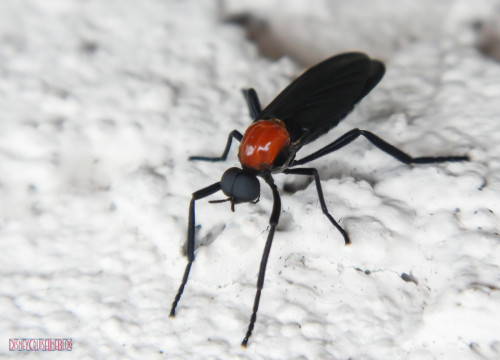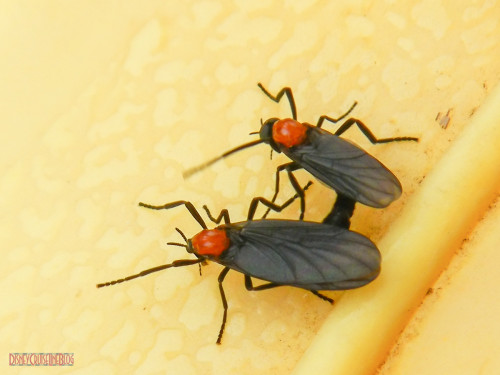I was mowing the lawn this afternoon, and I noticed that it was officially that time of year in Florida where one of mother nature’s less-than-useful creatures come out in swarms. I am talking about lovebugs, and not the the Volkswagen kind, like Herbie. Lovebugs appear about twice a year; in the spring (April – May), and again in late summer (August – September). The magnitude of the swarms vary depending on the weather and vary across the region. During heavy swarms, it is not uncommon to see dead lovebugs covering the ground. About 6 years ago, the spring swarm was so bad that I had to use the leaf blower to clear off the patio every morning.
Lovebugs live about 3 to 4 days, which is just long enough for them to mate, feed, and deposit a batch of eggs. It is not often you see a single lovebug, as they are usually in a constant state of mating.
So, why am I talking about lovebugs on a Disney Cruise Line blog? Well, the lovebugs (as their name implies) would not hurt a fly. They are incapable of biting or stinging. However, they are a nuisance for two main reasons; they litter the ground in blankets after they die, and are a pain in the butt to clean off your car.
The latter is why I decided to write about the lovebugs. A quick drive can net a few squashed lovebugs; just imagine what happens when you drive through a swarm on I-4. The chemistry of a lovebug body is quite acidic, and if left on your car for more than a few hours, they become almost impossible to wash off. If left on for longe they can eat away at your paint. This is an actual photo of the hood of my car as a result of lovebug damage. What you see are pits in the black paint, which look awesome when you apply a coat of wax.
The tip for today is that if you are driving your own vehicle to Walt Disney World or to Miami or Port Canaveral for a Disney Cruise, check your car for smashed lovebugs. Take the time to find a carwash, or grab the ice bucket, some soapy water, and a wash cloth from a hotel and get the bugs off of your car before permanent damage to the paint occurs. I know this is the last thing you want to worry about when you arrive at the terminal and see one of the Disney ships, but the time spent cleaning these bugs off before you head out to sea (or letting your car bake in the Florida sun while park hopping) will be well worth your time and effort.




I’ve been told (I haven’t tried it yet myself) that if you spray the front of the car with a non stick cooking spray (like Pam) the bugs become much easier to wash off.
Interesting. We found that using a wet dryer cloth does an excellent job of getting them off.